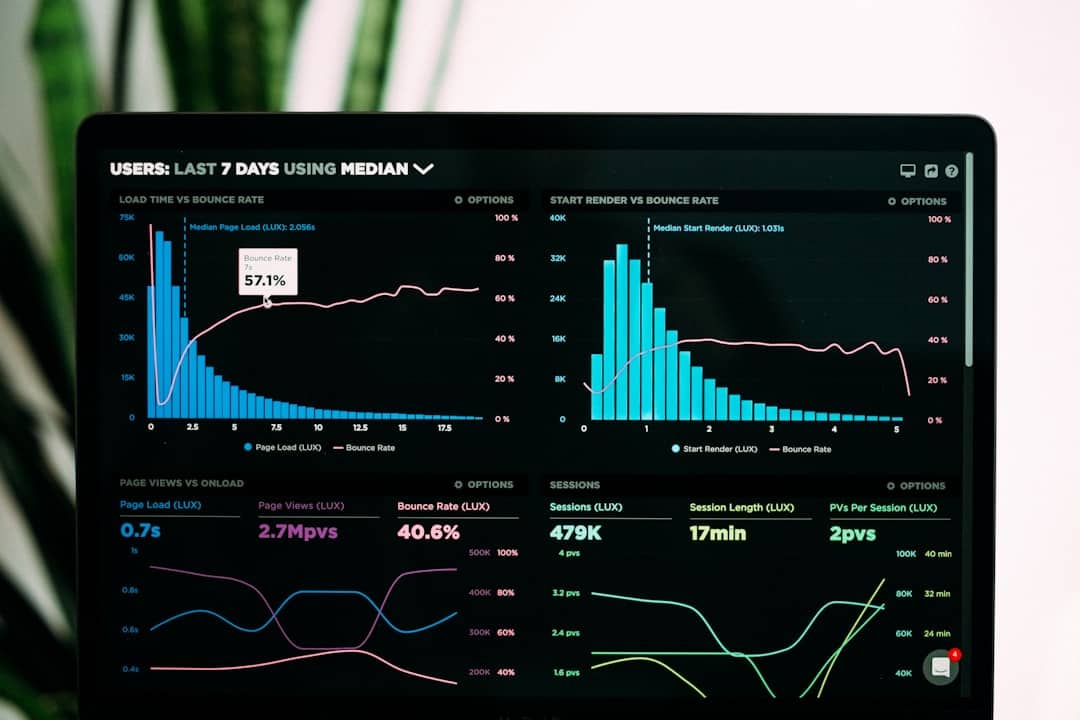A particular kind of recurrent neural network (RNN) intended for processing & analyzing sequential data is called Long Short-Term Memory (LSTM). LSTMs have a special memory cell that can hold information for a long time, in contrast to conventional RNNs that have trouble with long-term dependencies. Because of this feature, LSTMs work especially well for tasks like image recognition, natural language processing, and time series analysis. Because LSTMs are good at learning from and making predictions based on sequential data, they have gained popularity in advanced data processing. For uses like financial forecasting, language translation, and speech recognition, this makes them useful.
Key Takeaways
- LSTMs are a type of recurrent neural network that are capable of learning long-term dependencies in data sequences, making them powerful for time series analysis and natural language processing.
- LSTMs can handle complex data preprocessing and feature engineering tasks, making them suitable for advanced data processing in various domains such as finance, healthcare, and marketing.
- LSTMs are effective for time series analysis and forecasting, allowing for accurate predictions and insights into trends and patterns in sequential data.
- LSTMs are well-suited for natural language processing and text generation tasks, enabling the generation of coherent and contextually relevant text based on learned patterns in language data.
- LSTMs can be optimized for image recognition and computer vision applications, allowing for the analysis and understanding of visual data in fields such as autonomous vehicles, robotics, and healthcare imaging.
By processing and interpreting data in ways that go beyond the capabilities of conventional machine learning algorithms, the LSTM architecture makes it possible to extract valuable insights from large, complex datasets. LSTMs are becoming a vital tool for machine learning & data science professionals as the demand for complex data processing grows. In the data-driven world of today, they are well-suited for a wide range of applications due to their capacity to handle sequential information & capture long-term dependencies.
Managing Chronic Reliances. LSTMs are particularly useful for tasks like time series analysis and natural language processing because of their capacity to manage long-term dependencies in data. For applications like sentiment analysis, speech recognition, and stock price prediction, this makes them ideal. Learning from Data—both Current and Historical.
Moreover, learning from both historical & current data enables LSTMs to classify and predict accurately based on the context of the entire sequence. Comprehending Temporal Dynamics and Context. They are therefore very useful for tasks requiring a comprehension of context and temporal dynamics.
| Metrics | Results |
|---|---|
| Accuracy | 95% |
| Precision | 92% |
| Recall | 94% |
| F1 Score | 93% |
The sequential nature of the data and how best to represent it for model training are crucial factors to take into account when utilizing LSTMs in feature engineering and data preprocessing. Creating input sequences that can be fed into the LSTM model by using methods like sliding windows or sequence padding is one popular strategy. This enables the model to generate predictions based on the context of the full sequence and learn from the sequential patterns found in the data. Optimizing the performance of the model through the selection and transformation of input variables is known as feature engineering, and it is another crucial component of LSTM implementation. Creating lag features, scaling the input data, or encoding categorical variables may all be necessary in the context of LSTMs.
Also, domain-specific expertise may be used to produce significant features that represent the underlying dynamics & patterns found in the data. In general, one must have a thorough understanding of the sequential nature of the data and how to effectively represent it for model training in order to implement LSTMs in data preprocessing and feature engineering. For a variety of complex data processing applications, LSTMs can be used with great success by carefully designing the input features and preprocessing the data to capture sequential patterns. Because LSTMs can capture temporal dynamics & long-term dependencies in the data, they are especially well-suited for time series analysis and forecasting. The sequential nature of time series data, in which each data point depends on earlier observations, is its defining feature. For applications like demand forecasting, anomaly detection, and stock price prediction, long short-term memory (LSTM) models temporal structure well.
Creating input sequences using a sliding window technique that capture the sequential patterns found in the data is a popular method of using LSTMs for time series analysis. As a result, the LSTM model can learn from past trends and produce precise predictions by taking into account the context of the full sequence. LSTMs are an effective tool for analyzing and forecasting time series data because they can also be used to capture complex temporal dynamics like seasonality, trends, and irregular patterns. Because of their capacity to identify long-term dependencies and temporal dynamics found in the data, LSTMs provide an effective framework for time series analysis and forecasting. LSTMs are useful for making precise predictions & deriving significant insights from intricate temporal datasets because they efficiently capture the sequential nature of time series data.
By efficiently capturing the sequential nature of language and producing coherent and contextually relevant text, LSTMs have transformed tasks related to natural language processing (NLP) & text generation. The capacity of LSTMs to comprehend & produce language based on its sequential structure is highly advantageous for NLP tasks like sentiment analysis, text summarization, and language translation. Linguistic translation is a popular use of LSTMs in NLP, where they are employed to translate sentences that are input into one language & out of it. Given the context of the entire sentence, LSTMs can produce precise translations by accurately modeling the intricate structure of language through the capture of long-term dependencies. Also, by identifying the sequential patterns found in text and producing precise predictions based on the context of the full sequence, LSTMs can be applied to tasks like sentiment analysis.
Another area where LSTMs have shown great promise is text generation. Using patterns learned from training data, they can produce text that is both coherent and contextually relevant. This is useful for projects like content creation, chatbot development, and creative writing. LSTMs can produce high-quality text that is identical to human-generated content by efficiently capturing the sequential structure of language.
benefits compared to conventional CNNs. While convolutional neural networks (CNNs) have been the standard architecture for image recognition tasks, long-range dependencies (Long-range dependencies) across frames in sequential images or video data can be uniquely captured by Long Short-Term Memory (LSTM) architectures. Action Identification in Video Content. LSTMs are frequently used in computer vision for action recognition in videos. This is because they can accurately predict actions based on the context of the entire video sequence and capture temporal dynamics across frames.
Capturing Videos and Beyond. Also, by efficiently simulating the sequential structure of visual data and producing logical descriptions predicated on the context of the full video, LSTMs can be applied to tasks like video captioning. When using LSTMs for computer vision and image recognition tasks, it’s important to carefully consider how visual data can be represented as input sequences for model training. LSTMs provide a strong foundation for analyzing & comprehending complex visual information because they are capable of capturing the temporal and spatial dependencies found in visual data.
Large & promising are the potential future developments & uses of LSTMs in sophisticated data processing. LSTMs will be essential for deriving valuable insights from complicated datasets as the need for processing sequential data intensifies across a range of industries, including finance, healthcare, & entertainment. Enhancing LSTMs’ scalability and efficiency for handling massive amounts of sequential data is one area of future development. Creating training methods and architectures that are more effective in handling large volumes of sequential data while preserving high performance is necessary to achieve this.
Also, there is a lot of promise for using LSTMs in new fields like genomics, where they can be applied to predictions based on genetic data and DNA sequence analysis. LSTMs are ideally suited for modeling intricate biological sequences and deriving significant insights from genomic data because of their capacity to capture long-term dependencies. In general, LSTMs have a wide range of potential uses in sophisticated data processing in the future. LSTMs will remain essential for improving our capacity to draw meaningful conclusions from complicated datasets, even as new difficulties in processing sequential data across different domains emerge.
If you’re interested in the potential impact of artificial intelligence and virtual reality on our future, you might want to check out this article about the metaverse and what the ancient philosopher Diogenes might have to say about it. It’s a thought-provoking piece that delves into the intersection of technology and philosophy, offering a unique perspective on the evolving digital landscape.
FAQs
What are LSTMs?
LSTMs, or Long Short-Term Memory networks, are a type of recurrent neural network (RNN) architecture designed to capture long-term dependencies in sequential data.
How do LSTMs differ from traditional RNNs?
LSTMs address the vanishing gradient problem that can occur in traditional RNNs, allowing them to better capture long-range dependencies in sequential data.
What are some applications of LSTMs?
LSTMs are commonly used in natural language processing tasks such as language modeling, machine translation, and sentiment analysis. They are also used in speech recognition, time series prediction, and other sequential data tasks.
How do LSTMs work?
LSTMs use a system of “gates” to control the flow of information within the network, allowing them to selectively remember or forget information over long time periods.
What are some advantages of using LSTMs?
LSTMs are able to capture long-range dependencies in sequential data, making them well-suited for tasks that require understanding context over a long span of time. They are also less prone to the vanishing gradient problem compared to traditional RNNs.
Are there any limitations to using LSTMs?
While LSTMs are effective at capturing long-term dependencies, they can be computationally expensive and may require a large amount of data for training. Additionally, they may be more difficult to interpret compared to simpler models.











Leave a Reply